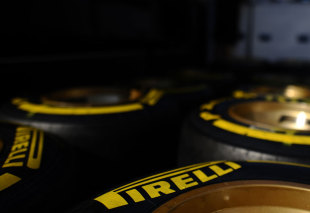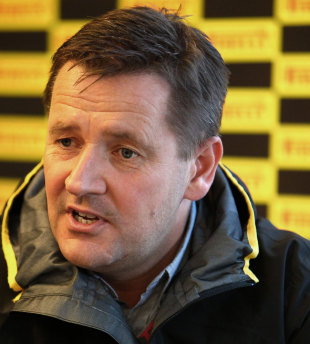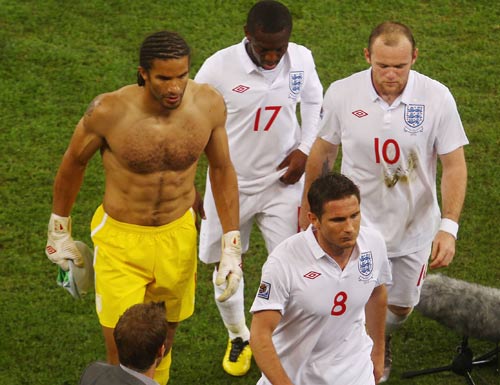In the first part of an exclusive interview with Paul Hembery, the Pirelli motorsport director explains how the teams have begun to overcome the challenges of this year's tyres

With Pirelli playing a big role in Formula One again this year, how would you assess the season so far from your company's perspective?
As a sport we have to be happy that we have had such a stimulating championship so far. At the start of the year we had various different winners and we've seen cars that are much more competitive this season as a result of the rule changes from last year - getting rid of the blown diffusers and flexi front wings that the top teams had. That's had a grouping-together effect on the performance of the cars. Combined with the challenge that we've given them with the tyres, we've seen some very exciting races and we've got a championship that is by far and away not over at this stage, and maybe that hasn't been the case in the last couple of years.
Those rule changes have had a big effect on the way the cars use the tyres, is that something you anticipated?
We only get to see the team's new cars in February so we have a similar problem. We're testing on a two-year-old car and at that time it was a modified Toyota set up to give similar balance and downforce to the 2011 cars. So for us it exaggerated some of the challenges we thought we were going to see because it changed the balance on the cars, particularly these big aero changes and the loading front to rear on the tyres changed quite dramatically. That made the temperatures front to rear on the cars change and with what we did that maybe amplified the effect and gave the teams an extra technical challenge on top of what we anticipated.
Pirelli also made some changes to the tyres for this year, including a wider footprint at the front [and rear], was that based on the 2011 levels of downforce?
No, we felt the cars would need a bigger footprint this year with less downforce - that was intentional. What we didn't realise was that there would be such big differentials front to rear and as a characteristic this year we have seen a number of teams struggling to get the same temperature in the front tyres as they've got in the rear tyres. We anticipated cars maybe having a problem with wheelspin - with traction and overheating the tyres - but to be honest that's been ironed out very quickly among the teams. What we didn't envisage was the big temperature differentials front to rear. To optimise that with both compounds to get the maximum performance is difficult. It's is a question of which compound do you want to maximise on and optimise on, because a car starting the race with 150 kilos [of fuel] is very different to how they are at the end of the race and that has an influence as well on the tyres' performance. So it's been a big technical challenge for the teams, I can't deny that.
So when the teams talk about these narrow operating windows is that what they are referring to - the balance between high and low fuel in qualifying and the race?
To be honest, it's less about the sensitivity and it's probably the difference between the two compounds more than the windows. It's likely that you're going to get one working very well and the other one maybe not as optimum and in cooler temperatures we envisage some bigger issues. We saw a little bit of that at Silverstone, for example, with the softer tyres and it being a little bit too cool for it to get into its optimum working range. The window as such I think is slightly over exaggerated, it's really more to do with the relative difference between the two compounds and maybe having to compromise on one. But the European season is quite difficult because unlike some of the long-haul races where you're more or less guaranteed the weather, in Europe it really can go from 15C up to 35C or 40C and then you can throw in some rain as well.
So do you think we will start to see the teams get on top of the tyres like they did last year?
I think we've already seen it. We're already seeing the shaping up of the championship and in Hungary we saw Kimi [Raikkonen] coming through strongly. So the people at the front ... there's no doubt that they are exceptional and it's not a surprise [to see them on top of the tyres].

The regulations haven't been finalised for 2013 but it's looking like there will be less of a change in downforce levels. Does that mean you are going to mix up the tyres again so that we have this uncertainty at the start of the year that most fans seem to enjoy even if the teams don't?
It's probably more the drivers that don't enjoy it. The teams, if you talk to the technical people, they just want to know it's the same for everybody and they see it as a technical challenge that gives them an advantage if they dominate it before their competitors. If you're looking pragmatically at it, that's the way the engineers will look at it. Drivers, of course you're only ever going to have one happy driver and he'll be at the top of the podium, but that's true in all motorsport.
The fans, well the vast majority are very happy, but you have some people who want to see the ultimate technical push - including engines and everything - to try to create the fastest car in the regulations. But when you think that we have to go into new markets now - we're trying to grow the sport in Asia, in India and go back to the USA - we've got to provide a sport that is entertaining and stimulating for the fans. If they turn on the television and see a procession then unfortunately they're not going to turn on again. If you're a country that doesn't have a history and culture of the sport of Formula One then that's a problem. We need people that turn on to take up the sport to enjoy the excitement and the thrill of the sport. That's something that maybe some of the more classical European audiences will have to understand going forward - we are competing with other sports.
It's okay for people to look at the Premier League football deals Sky are doing in the UK and say Formula One wants to arrive at those levels, but if that's going to happen Formula One needs to compete with football, the NFL and many other sports. So you have to provide a product that people want to see and in motor racing people really do want to see overtaking and battles. So you've got to get the balance right between the technical challenge, making sure you've got the right drivers and having very exciting racing. I think we have that at the moment to the point that insiders in the paddock, who have more information than the fan, really are questioning who's going to win the race and who's going to qualify on pole and that's a great situation to be in.
Is that something you're going to target again next year in terms of the compounds and construction? Have you made a decision in that respect?
We're going to review that. We could have done some changes mid-season this year, but having a season with teams so close together we felt that any changes we made could backfire because maybe one team would find that the change would be better suited to them and may give them an advantage, so we couldn't do that this year. Going forward we have a couple of areas we want to improve. We want to improve our wet tyre for example and bring it closer to the intermediate so that it works better in the wetter conditions, that's something we're working on. We're always working on improving the little bits of blistering that we get now and again with overheating on the shoulders. But in terms of structure and compound choices we're undecided. We need to understand how much of a challenge the teams would like because we have to bear in mind that they will go straight into 2014 with a very rapid change in regulations. Maybe they don't want to be challenged so much next season when such a huge challenge is coming the year after. If we did continue in 2014 maybe we would take the opportunity ourselves to do something more dramatic.
Part two of this interview, including Paul Hembery on the possibility of qualifying tyres, banning tyre warmers and a tyre war, will be published on Tuesday
Laurence Edmondson is a deputy editor on ESPNF1
© ESPN Sports Media Ltd.
 Laurence Edmondson is deputy editor of ESPNF1 Laurence Edmondson grew up on a Sunday afternoon diet of Ayrton Senna and Nigel Mansell and first stepped in the paddock as a Bridgestone competition finalist in 2005. He worked for ITV-F1 after graduating from university and has been ESPNF1's deputy editor since 2010
Laurence Edmondson is deputy editor of ESPNF1 Laurence Edmondson grew up on a Sunday afternoon diet of Ayrton Senna and Nigel Mansell and first stepped in the paddock as a Bridgestone competition finalist in 2005. He worked for ITV-F1 after graduating from university and has been ESPNF1's deputy editor since 2010

